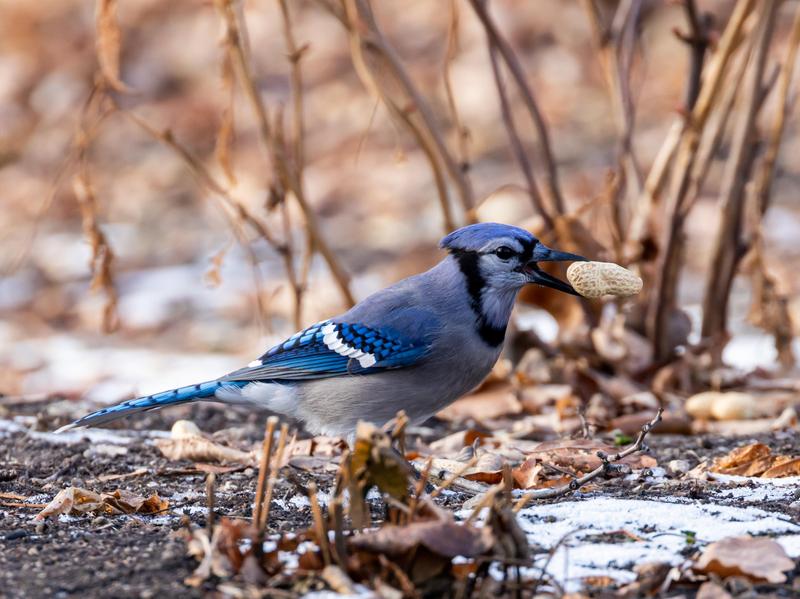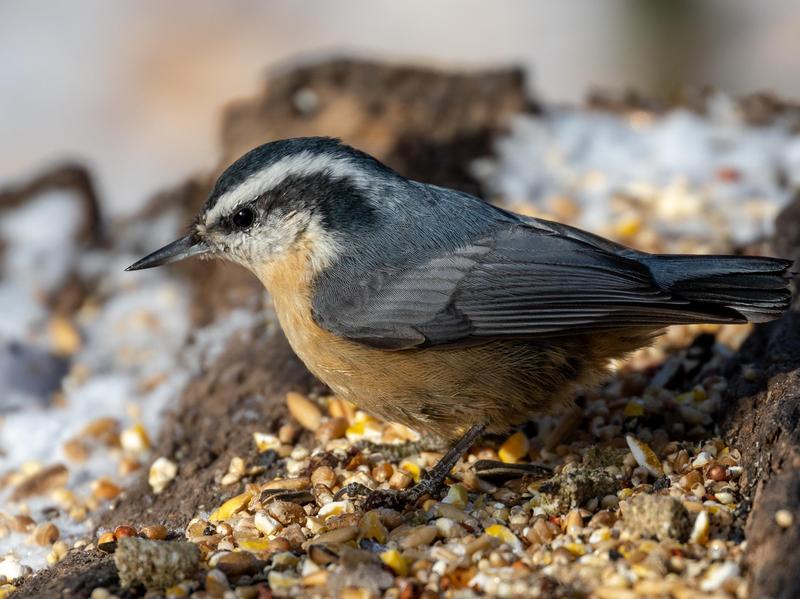A Q&A with Elsie Hampshire, an avid birder and our Conservation Programming Developer.
1. Is it beneficial to birds to have a feeder in my yard?
Elsie: Yes and No. Birds can survive and find food without help from bird feeders but they do provide a reliable food source that helps them survive harsh weather. Although scientists don’t fully understand how feeders affect bird populations yet, we do know our feeder offerings only supplement their natural foods, and birds don’t become fully dependent on them.
In fact, one of the biggest benefits of feeding birds is connecting people to nature in a meaningful way, which motivates us in the effort to conserve all bird species – not just the ones eating your peanuts!
2. What is the best type of bird feeder?
E: The best type of feeder is one that is easy to clean and designed for the food you’re putting in it. Remember that it’s the food that the birds are interested in, not the feeder itself, so as long as your feeder is clean and accessible to birds that is all they really care about.
The biggest differences between feeder types are the food they are built for (suet, seed, or nectar), and the size of birds that can use them. Seed feeders come in the widest variety of options: tube feeders are suited to smaller birds like chickadees and finches, while platform and hopper feeders accommodate larger sparrows and jays. Suet feeders are specifically designed for woodpeckers, while nectar feeders are built for either hummingbirds or orioles.
My favourite feeders to use at home are a simple tube feeder and a suet feeder. Whichever feeder you use be sure to clean it regularly and place it somewhere birds can feed safely.
3. Why do I need to clean my bird feeder?
E: You wouldn’t want to eat mouldy food off a dirty plate, and neither do birds! Always empty out the leftover seeds in your feeder when refilling to help prevent mould growth, and in wet weather don’t fill the feeders.
Because so many birds will use one feeder, there is always a risk of disease spread. Most feeders should be fully cleaned at least every 2 weeks and disinfected with a 10% bleach solution. Make sure it is completely dry before refilling.
If you do see sick birds at your feeder, take them down, clean and disinfect them. Wait a week before putting them out again. If you are concerned about a sick or injured bird in your yard, contact a wildlife rehabilitator, and follow their instructions.
4. What is the best bird food?
E: Different species are adapted for finding and eating different food, so the types of birds you see will depend on what you offer them.
If woodpeckers are what you love, then you can’t go wrong with suet, while blue jays always appear when the peanuts come out (unless the squirrels get there first!).
My personal favourite is Black Oil Sunflower seed, it appeals to the widest variety of species and has the benefit of being relatively inexpensive.
Seed mixes are generally something to avoid, while it may seem like a seed mix with lots of different things will attract lots of different birds, it doesn’t often work out that way in real life. Most are full of cheap filler seeds that birds aren’t interested in. They end up scattering most of the seed on the ground while picking through for the good stuff.
In the long run, it’s cheaper and easier to feed a single high-quality seed type, such as sunflower seeds that can be eaten by a variety of birds, rather than trying to feed them a variety of seeds they don’t actually want to eat.
5. How do I stop the squirrels/unwanted birds from eating everything?
E: There’s no single easy solution to stop unwanted visitors from scarfing down your bird seed before the birds get a chance but there are lots of options that make it harder.
Some bird feeders are specifically designed to keep squirrels or larger birds out. These generally have a small cage or weight-activated spring that closes off access when a squirrel shows up.
If you have a larger yard, hanging your feeder away from any potential squirrel launching pads and adding baffles to stop them from climbing up the feeder pole is generally the most successful method. However, the ingenuity and determination of a hungry squirrel are no match for most feeders and sometimes it’s best to accept your furry dinner guest as part of your backyard habitat.
6. What are some common birds I can expect on my feeder in the winter or early spring?
E: The most common birds that are likely to visit your feeder in winter are downy & hairy woodpeckers (on suet feeders), blue jays (love peanuts), white-breasted nuthatches, black-capped chickadees, house finches, and dark-eyed juncos (on seed feeders).
All these birds, except the juncos, can be found in your yard any time of year. But once spring arrives birds are more interested in eating bugs like caterpillars than they are in seeds, so most people notice a drop-off in visitors on their feeders.
This is why feeders are often taken down once the snow has melted and put out again in the fall when birds lose access to the food sources buried under the snow. The best way to attract birds to your yard in spring and summer is to ‘birdscape’ your yard, planting a variety of native plants that create a habitat where birds can thrive.









